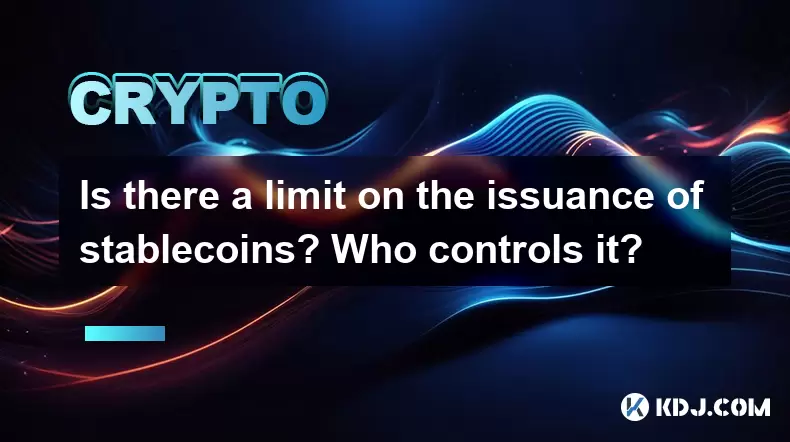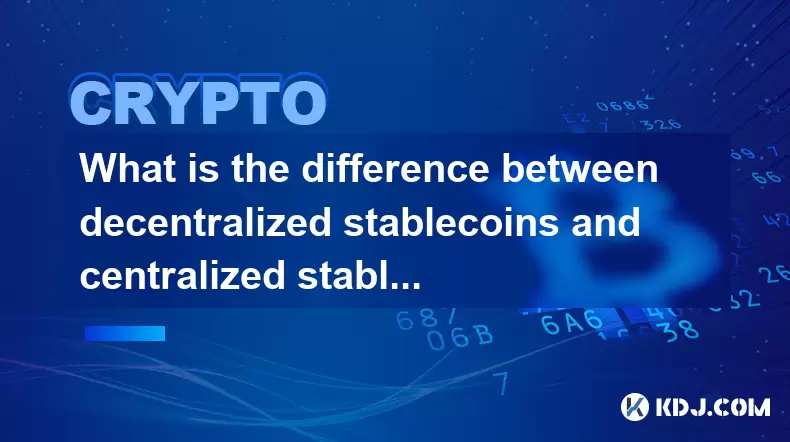-
 Bitcoin
Bitcoin $118300
-0.25% -
 Ethereum
Ethereum $4593
0.63% -
 XRP
XRP $3.099
-0.23% -
 Tether USDt
Tether USDt $1.001
0.09% -
 BNB
BNB $840.2
0.52% -
 Solana
Solana $192.6
-0.85% -
 USDC
USDC $0.0000
0.01% -
 Dogecoin
Dogecoin $0.2286
0.98% -
 TRON
TRON $0.3575
-0.50% -
 Cardano
Cardano $0.9437
1.93% -
 Hyperliquid
Hyperliquid $48.21
6.52% -
 Chainlink
Chainlink $22.33
-1.39% -
 Sui
Sui $3.826
0.89% -
 Stellar
Stellar $0.4272
0.26% -
 Bitcoin Cash
Bitcoin Cash $592.7
0.19% -
 Ethena USDe
Ethena USDe $1.001
0.06% -
 Hedera
Hedera $0.2528
0.25% -
 Avalanche
Avalanche $24.37
2.20% -
 Litecoin
Litecoin $120.5
-1.98% -
 Toncoin
Toncoin $3.493
2.53% -
 UNUS SED LEO
UNUS SED LEO $9.657
4.15% -
 Shiba Inu
Shiba Inu $0.00001293
-0.65% -
 Uniswap
Uniswap $10.93
-0.14% -
 Polkadot
Polkadot $3.981
-1.15% -
 Dai
Dai $1.000
0.03% -
 Bitget Token
Bitget Token $4.627
1.22% -
 Cronos
Cronos $0.1545
0.86% -
 Ethena
Ethena $0.7319
1.41% -
 Aave
Aave $309.9
-1.09% -
 Pepe
Pepe $0.00001108
-1.40%
Is there a limit on the issuance of stablecoins? Who controls it?
Stablecoins like USDT and USDC have issuance limits tied to fiat reserves, while DAI and UST use crypto-collateral and algorithms, respectively, with varying control mechanisms.
May 16, 2025 at 04:49 am

Stablecoins have become a crucial part of the cryptocurrency ecosystem, offering a bridge between traditional fiat currencies and the volatile world of digital assets. One of the most common questions about stablecoins is whether there is a limit on their issuance and who controls this process. This article will delve into these questions, providing a comprehensive understanding of the mechanisms behind stablecoin issuance and control.
Understanding Stablecoins
Stablecoins are cryptocurrencies designed to minimize the volatility typically associated with other digital assets like Bitcoin and Ethereum. They achieve this stability by pegging their value to a reserve asset, which can be a fiat currency like the US dollar, a commodity like gold, or even another cryptocurrency. The most common type of stablecoin is the fiat-collateralized stablecoin, where each coin is backed by an equivalent amount of fiat currency held in reserve.
Types of Stablecoins and Their Issuance Limits
There are several types of stablecoins, each with its own method of maintaining stability and, consequently, different approaches to issuance limits. The main types include:
Fiat-Collateralized Stablecoins: These stablecoins, such as Tether (USDT) and USD Coin (USDC), are backed by fiat currency reserves. The issuance of these stablecoins is typically controlled by the issuing company, which must maintain a reserve of the corresponding fiat currency. The limit on issuance is theoretically tied to the amount of fiat currency the company can hold in reserve.
Crypto-Collateralized Stablecoins: These stablecoins, like DAI, are backed by other cryptocurrencies. The issuance of these stablecoins is often controlled by smart contracts on blockchain platforms. The limit on issuance is determined by the value of the collateral held in the smart contract, which must exceed the value of the stablecoins issued.
Algorithmic Stablecoins: These stablecoins, such as TerraUSD (UST), use algorithms to maintain their peg without any collateral. The issuance of these stablecoins is controlled by the algorithm itself, which adjusts the supply based on market demand. The limit on issuance is theoretically unlimited, as it is not tied to any physical reserve.
Who Controls the Issuance of Stablecoins?
The control over the issuance of stablecoins varies depending on the type of stablecoin and the entity behind it. Here's a breakdown of the control mechanisms:
Centralized Control: For fiat-collateralized stablecoins like USDT and USDC, the issuance is controlled by the issuing company. These companies, such as Tether Limited and Circle, are responsible for minting new stablecoins and maintaining the necessary reserves. They have the authority to decide how many stablecoins to issue, based on their reserve holdings.
Decentralized Control: For crypto-collateralized stablecoins like DAI, the issuance is controlled by smart contracts on decentralized platforms like Ethereum. These smart contracts automatically manage the issuance and redemption of stablecoins based on predefined rules. The control is distributed among the users of the platform, who can participate in governance decisions.
Algorithmic Control: For algorithmic stablecoins like UST, the issuance is controlled by the algorithm itself. The algorithm adjusts the supply of stablecoins in response to market conditions, without any centralized authority. The control is thus embedded in the code of the stablecoin protocol.
Regulatory Oversight and Issuance Limits
Regulatory bodies play a significant role in overseeing the issuance of stablecoins, particularly those that are fiat-collateralized. In many jurisdictions, stablecoin issuers are required to comply with financial regulations, which can impose limits on the amount of stablecoins they can issue. For example:
In the United States, the Office of the Comptroller of the Currency (OCC) and the Securities and Exchange Commission (SEC) have issued guidelines and regulations that stablecoin issuers must follow. These regulations can include requirements for reserve audits and transparency, which indirectly limit the issuance of stablecoins.
In the European Union, the Markets in Crypto-Assets (MiCA) regulation is set to impose similar requirements on stablecoin issuers, ensuring that they maintain adequate reserves and adhere to transparency standards.
In other jurisdictions, such as Singapore and Japan, regulatory bodies have their own sets of rules that stablecoin issuers must comply with, which can also affect the issuance limits.
Practical Examples of Issuance Limits
To illustrate how issuance limits work in practice, let's look at a few examples:
Tether (USDT): Tether Limited, the issuer of USDT, claims to maintain a 1:1 reserve of US dollars for each USDT in circulation. The company periodically publishes attestations from independent auditors to verify its reserve holdings. The issuance of USDT is thus limited by the amount of US dollars Tether can hold in reserve.
USD Coin (USDC): Circle, the issuer of USDC, also maintains a 1:1 reserve of US dollars. However, Circle is subject to more stringent regulatory oversight, including regular audits by the New York State Department of Financial Services (NYDFS). The issuance of USDC is limited by the amount of US dollars Circle can hold in reserve and the regulatory requirements it must meet.
DAI: The issuance of DAI is controlled by the MakerDAO protocol on the Ethereum blockchain. Users can lock up collateral, such as Ethereum, in the protocol to mint DAI. The amount of DAI that can be issued is limited by the value of the collateral held in the protocol, which must exceed the value of the DAI issued.
TerraUSD (UST): The issuance of UST is controlled by the Terra protocol's algorithm, which adjusts the supply of UST based on market demand. There is no theoretical limit on the issuance of UST, as it is not tied to any physical reserve. However, the stability of UST depends on the effectiveness of the algorithm in maintaining its peg.
Frequently Asked Questions
Q: Can stablecoin issuers increase their issuance limits by increasing their reserves?
A: Yes, for fiat-collateralized stablecoins, issuers can increase their issuance limits by increasing their reserves of the corresponding fiat currency. However, they must comply with regulatory requirements and maintain transparency about their reserve holdings.
Q: Are there any risks associated with algorithmic stablecoins due to their unlimited issuance potential?
A: Yes, algorithmic stablecoins carry the risk of depegging if the algorithm fails to maintain the stablecoin's value. The unlimited issuance potential can lead to an oversupply of stablecoins, which can destabilize the peg and cause the stablecoin to lose its value.
Q: How do regulatory bodies ensure that stablecoin issuers comply with issuance limits?
A: Regulatory bodies enforce compliance through regular audits, transparency requirements, and legal frameworks that stablecoin issuers must adhere to. For example, in the United States, the OCC and SEC require stablecoin issuers to undergo audits and publish reserve attestations to ensure compliance with issuance limits.
Q: Can the issuance limits of stablecoins change over time?
A: Yes, the issuance limits of stablecoins can change over time, particularly for fiat-collateralized stablecoins. Issuers can increase their reserves to issue more stablecoins, while regulatory changes can also affect the limits imposed on stablecoin issuance.
Disclaimer:info@kdj.com
The information provided is not trading advice. kdj.com does not assume any responsibility for any investments made based on the information provided in this article. Cryptocurrencies are highly volatile and it is highly recommended that you invest with caution after thorough research!
If you believe that the content used on this website infringes your copyright, please contact us immediately (info@kdj.com) and we will delete it promptly.
- Kazakhstan's Crypto Leap: Bitcoin ETF and Central Asia's Digital Finance Future
- 2025-08-13 12:45:19
- BlockDAG Presale Blazes Past $371M: Fundraising Frenzy Fuels Crypto Sensation
- 2025-08-13 13:05:21
- Meme Coins: Chasing the 2025 Surge – Which Will Moonshot?
- 2025-08-13 10:25:23
- Bitcoin's Wild Ride: Rally, Pullback, and What's Next
- 2025-08-13 10:25:23
- Bitcoin, Bitmax, and Institutional Demand: A New Era of Crypto Investment
- 2025-08-13 10:45:12
- Solana, ROAM, and Airdrops: What's the Buzz in 2025?
- 2025-08-13 11:35:13
Related knowledge

What is the difference between decentralized stablecoins and centralized stablecoins? Pros and cons comparison
Jun 15,2025 at 09:42am
What Are Stablecoins and Why Do They Matter?Stablecoins are a category of cryptocurrencies designed to maintain a stable value, usually pegged to an e...

What is the role of stablecoins in DeFi? Advantages and limitations analysis
Jun 14,2025 at 06:28am
Understanding Stablecoins in the DeFi EcosystemStablecoins play a pivotal role in the decentralized finance (DeFi) landscape by providing a bridge bet...

How do algorithmic stablecoins work? Potential risks and market impact
Jun 12,2025 at 02:07pm
Understanding Algorithmic StablecoinsAlgorithmic stablecoins are a type of cryptocurrency designed to maintain a stable value relative to a specific a...

How do stablecoins anchor legal currencies? Technical and economic model analysis
Jun 16,2025 at 08:43am
Understanding the Concept of StablecoinsStablecoins are a category of cryptocurrencies designed to maintain a stable value relative to a specific asse...

How do stablecoins maintain price stability? Principles and risk analysis
Jun 11,2025 at 12:01am
Understanding the Mechanisms Behind Stablecoin StabilityStablecoins are a category of cryptocurrencies designed to minimize price volatility, often pe...

What is the operating mechanism of stablecoins? In-depth exploration of its stability principle
Jun 10,2025 at 09:28pm
Understanding the Core Concept of StablecoinsStablecoins are a unique category within the cryptocurrency market, designed to address one of the most s...

What is the difference between decentralized stablecoins and centralized stablecoins? Pros and cons comparison
Jun 15,2025 at 09:42am
What Are Stablecoins and Why Do They Matter?Stablecoins are a category of cryptocurrencies designed to maintain a stable value, usually pegged to an e...

What is the role of stablecoins in DeFi? Advantages and limitations analysis
Jun 14,2025 at 06:28am
Understanding Stablecoins in the DeFi EcosystemStablecoins play a pivotal role in the decentralized finance (DeFi) landscape by providing a bridge bet...

How do algorithmic stablecoins work? Potential risks and market impact
Jun 12,2025 at 02:07pm
Understanding Algorithmic StablecoinsAlgorithmic stablecoins are a type of cryptocurrency designed to maintain a stable value relative to a specific a...

How do stablecoins anchor legal currencies? Technical and economic model analysis
Jun 16,2025 at 08:43am
Understanding the Concept of StablecoinsStablecoins are a category of cryptocurrencies designed to maintain a stable value relative to a specific asse...

How do stablecoins maintain price stability? Principles and risk analysis
Jun 11,2025 at 12:01am
Understanding the Mechanisms Behind Stablecoin StabilityStablecoins are a category of cryptocurrencies designed to minimize price volatility, often pe...

What is the operating mechanism of stablecoins? In-depth exploration of its stability principle
Jun 10,2025 at 09:28pm
Understanding the Core Concept of StablecoinsStablecoins are a unique category within the cryptocurrency market, designed to address one of the most s...
See all articles

























































































